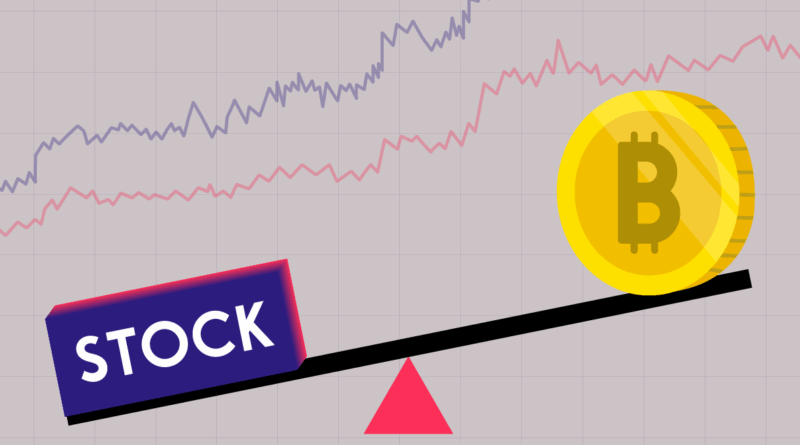Tokenised Stocks: The Intersection of Cryptocurrency and Conventional Equities
The rapid growth of blockchain technology has paved the way for an innovative form of financial instrument – tokenised stocks. This technology is connecting conventional equities to the dynamic world of cryptocurrencies, bringing with it a set of unique benefits like global reach, 24/7 trading, and integration with Decentralized Finance (DeFi). However, it also presents new obstacles concerning regulatory compliance, liquidity, and shareholder rights. Tokenised stocks are, in essence, digital assets borne from blockchain technology that mirrors or signifies shares in real-world firms.
Tokenised stocks empower investors to obtain traditional equity exposure via crypto tokens. These tokens, traded and held on blockchain networks, signify shares of real-world companies. Thanks to a progressive union between cryptocurrencies and stocks, this concept is quickly gaining momentum. Major platforms have started offering tokenised forms of recognised securities, adding to the appeal of this innovative asset.
A significant advantage of tokenised stocks lies in their global accessibility. With the power of public blockchains, companies can offer stock exposure to investors beyond the typical geographic confines of traditional stock exchanges. This means an investor in Europe, for example, might purchase shares in American companies like Apple or Tesla via tokens, removing the need for direct access to a US brokerage account.
Tokenised trading platforms generally have more lenient Know Your Customer (KYC) requirements compared to their traditional counterparts. Some tokenised stocks are indeed ERC-20 tokens that users can trade on-chain via a decentralized exchange free from KYC necessities. This is one of the many ways tokenised stocks are reshaping the investing landscape.
Contrasting conventional stock markets, tokenised stocks present the possibility of uninterrupted trading, operating 24/7 in the same vein as cryptocurrencies. This goes beyond mere extended hours, enabling these digital assets to integrate with the DeFi ecosystem, enriching their composability and financial utilisation. Once stocks become tokenised, they transform into programmable units of value, much like Lego bricks, opening up a variety of possibilities.
By either creating a channel to real-world stocks or merely providing financial exposure, tokenised stocks can offer investors underlying assets that maintain a low correlation with the crypto market. Given that the US stock market provides not only equities but also ETFs incorporating various non-equity exposures, such as GLD for gold and TLT for treasury bonds, investors are offered more opportunities to diversify their portfolios.
As the correlation between these varied financial instruments is relatively low or even negative, investors can achieve portfolio diversification by combining these underlying assets. This strategy could help mitigate major losses during market downturns, preventing the concentration of investments in a single asset. This kind of diversification strategy, traditionally challenging to achieve, now becomes possible.
Gains made possible by tokenised stocks allow for the implementation of strategies that previously couldn’t be executed in the crypto market. Long-short trading across multiple assets is one such strategy. Thanks to the variety of financial exposure brought forth by tokenised stocks, this strategy, once exclusive to traditional markets, is now slowly permeating the crypto universe.
However, the benefits of tokenised stocks come with substantial caveats. One prominent disadvantage is that tokenised stocks do not necessarily provide the same benefits that come with owning actual shares. As these tokens mirror the underlying stocks, they are more akin to synthetic derivatives. In other words, token holders might not be privy to common shareholder rights, such as voting at corporate meetings or influencing management decisions.
There are also concerns about liquidity risks with tokenised stocks, which could emerge as a more severe problem than that encountered with alternative cryptocurrencies. Given that tokenised stocks rely heavily on links with the US stock market, and operate using a round-the-clock trading mechanism, inconsistencies may arise during periods when US stocks are not traded, potentially leading to unexpected price fluctuations.
The regulatory landscape surrounding tokenised stocks is mired in uncertainty, with some even arguing that they could be unlawful. These innovative stocks currently operate in a sketchy legal environment in many countries. The tokenisation of private stocks, such as pre-IPO companies, presents additional challenges. It potentially allows for fundraising from the public without undergoing an IPO, thereby avoiding customary disclosures and presenting an intricate regulatory challenge.
The idea of a company being able to bypass the expensive and time-consuming process of an IPO by leveraging tokenised stocks brings about significant regulatory questions. Why would any firm endure the complex IPO procedure, if it could easily access the pool of retail investors with tokenised shares? Until the legal framework adapts to this new reality, providers of tokenised stocks must navigate a precarious regulatory balance.
To sum things up, despite the potential these innovative assets hold, tokenised stock providers find themselves traversing a nebulous regulatory environment. Having to align with current securities laws while simultaneously pushing the boundaries of what’s possible in the digital finance world can be a daunting task. Navigating these uncharted waters will require tenacity, adaptability, and no small amount of legal acumen.


